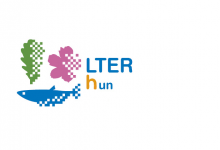LTER Hungary
General Information

Web Address
Description of Network
Hungarian scientists were present at the founding of the ILTER, the International Long-Term Ecological Research Network, in 1993. The Hungarian LTER network (LTER Hungary, or LTER-HU) was established two years later in 1995, with three sites, the Balaton LTER, KISKUN LTER and Síkfőkút LTER. The vision LTER Hungary is contributing to the quality of life by means of long-term complex site-based ecological and socio-ecological research at local, regional and global scales. Beside scientific research, LTER Hungary aims to be active in various forms of science-society interactions, from education to transdisciplinary research and stakeholder involvement.
Belongs to
Verified member sites
11 sites:
| Balaton LTSER (LTER_EU_HU_001) |
| Bugac-Bocsa-Orgovany Site, KISKUN LTER (LTER_EU_HU_007) |
| Kis-Balaton Site, Balaton LTER (LTER_EU_HU_006) |
| KISKUN LTER (LTER_EU_HU_003) |
| Kiskun Restoration Experiments, KISKUN LTER (LTER_EU_HU_015) |
| Lake Balaton LTER Site, Balaton LTER (LTER_EU_HU_005) |
| LTER Fulophaza Site, KISKUN LTER (LTER_EU_HU_012) |
| Orgovany Site, KISKUN LTER (LTER_EU_HU_014) |
| Sikfokut LTER (LTER_EU_HU_004) |
| Var-hegy Forest Reserve Site, Sikfokut LTER (LTER_EU_HU_017) |
1 sites:
| Kiskun Site Network (Jedlik), KISKUN LTER (LTER_EU_HU_013) |
Observed Properties
| redox potential of water | Researched by 2 sites |
| deadwood volume | Researched by 2 sites |
| bacillariophyceae abundance | Researched by 2 sites |
| ammonium content | Researched by 2 sites |
| habitat structure | Researched by 2 sites |
| vegetation pattern | Researched by 2 sites |
| habitat disturbance | Researched by 1 sites |
*This page is generated automatically using the available information in DEIMS-SDR describing the sites in this network/RI. Sites that are not documented on DEIMS-SDR are not featured on this page. We cannot therefore guarantee that this page will always reflect the actual list of sites for the network/RI.